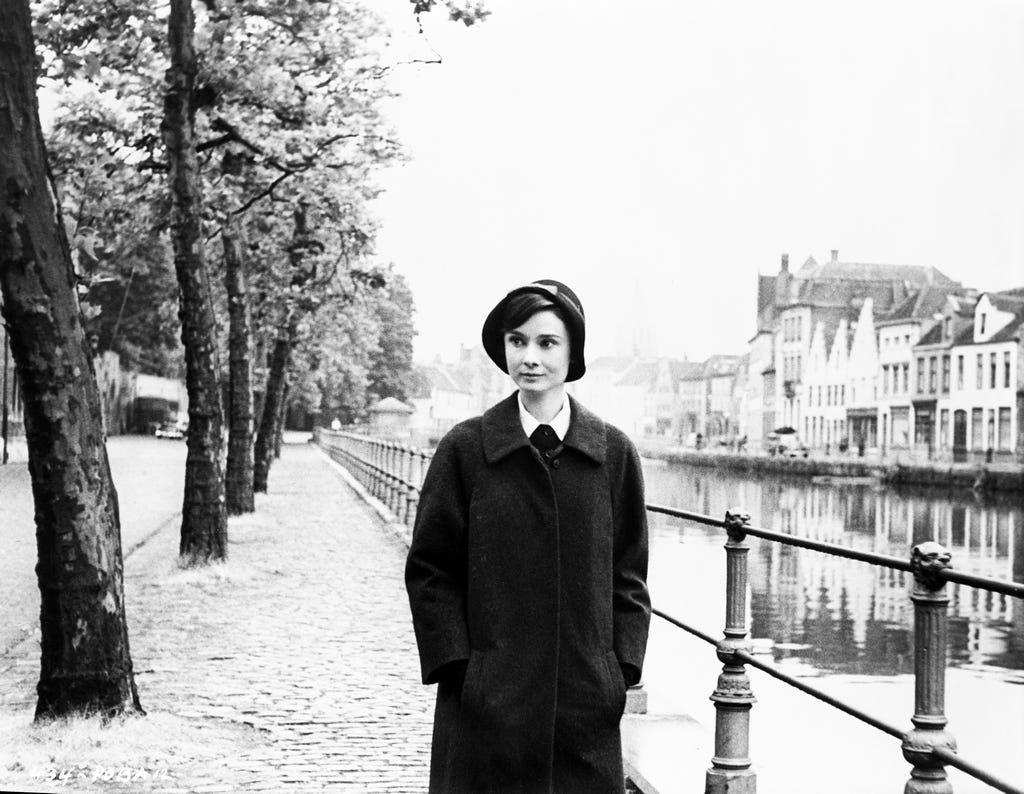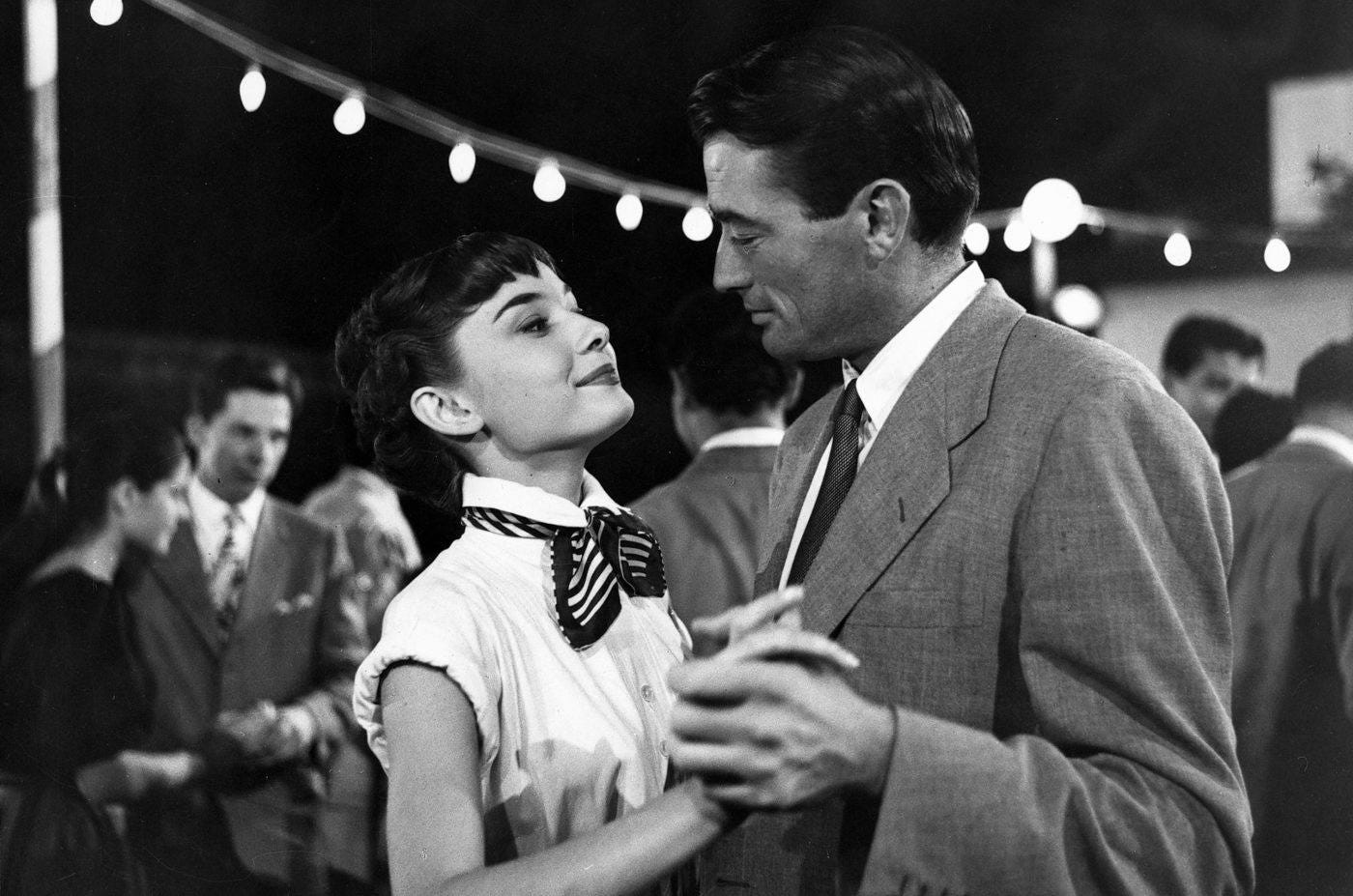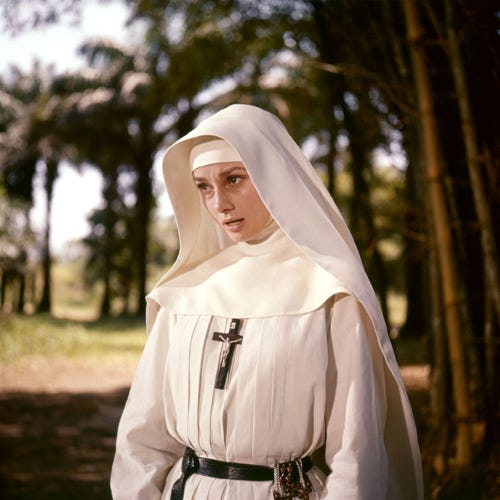Easy Drawings of Audrey Hepburn the Nuns Story
From the Vault: The Nun's Story
A Hidden Gem within Audrey Hepburn's Filmography

Recently the writers at CineNation discussed bad movies from performers we otherwise love. The choices were solid, but all contemporary. Noticing this, my mind began to think of my favorite classic Hollywood celebrities and wondered if any fit the bill. They do. No actor has a perfect score (unless you are John Cazale). All actors appear in bad movies, yet some have a string of successes that outweigh the dreck. Actors from the past are, usually, revered for a few roles, and our vision becomes narrowed to those roles. Digging deeper into a classic Hollywood performer's filmography could lead a filmgoer down a very dark path.
But, it could also lead to hidden gems.
For me, there is one actress so beloved by myself and many others that her bad films are easily forgotten. Despite knowing these bad films exist, I still seek out her films. This led me to discover a beautiful film that has been close to forgotten.
In 1953, director William Wyler was making a film called Roman Holiday. Starring Gregory Peck, the film took place in Rome, and it followed the adventures of a princess and journalist (Peck) around the city. Originally, the studios (with Wyler's support) wanted Elizabeth Taylor for the role. Despite this recommendation, Wyler screen-tested the role. Amongst his screen tests, he found Audrey Hepburn, and he was immediately impressed. Wyler gave Hepburn the lead role as Princess Ann.

In her early twenties, Audrey Hepburn had starred in minor roles and forgettable films before getting chosen by Wyler. Roman Holiday was her breakout role. Peck, after learning he was to receive top billing, recommended that Hepburn's name also receive top billing halfway through production. It was. The film catapulted Hepburn into stardom. At the 26th Academy Awards, she won the Best Actress award for Roman Holiday.
Hepburn's career skyrocketed, though some of her films are complete misfires. The blame, however, should not be placed at Hepburn's feet. The problems stem from her romantic leads: always too old, awkward, and implausible. Films like Love in the Afternoon, Funny Face, Paris When It Sizzles, Charade falter because of the awkward pairing. Other films such as War and Peace, Green Mansions, The Unforgiven, and The Children's Hour are examples of the films failing at storytelling, direction, and acting all together. In all of these examples, Hepburn shines, but the films fall flat.
Despite these knock on her film career, there are some highlights after Roman Holiday. Her next feature, Sabrina, is my favorite Hepburn film of all time. The love triangle storyline between Hepburn, William Holden, and Humphrey Bogart is awkward, but the writing and direction are sensational and masks the age gap between the romances. My Fair Lady and Breakfast at Tiffany's are iconic Audrey Hepburn films. While they have their strong points — Tiffany's is a top three Hepburn role — the two films do not age well. Their is humor dated, and their rewatchability is low.
Out of all her highs and lows, Audrey Hepburn's best performance might be from one of her most forgotten films, The Nun's Story.
Filmed in the late 1950s, and released in July of 1959, The Nun's Story recounts the true story of Marie Louise Habets, a Belgian nun. The film, directed by Fred Zinnemann, uncovers the harsh realities of a young woman's commitment to becoming a nun. Hepburn's character, Gabrielle and later known as Sister Luke, endures incredible sacrifice and personal will to survive in a completely new lifestyle. The film is incredibly eye-opening to the reality of devoting one's life to such a cause.

The film feels like an epic. At two hours and thirty minutes, the film can be stuffy, elongated, and unappealing. The power of Hepburn's role creates interest that, otherwise, may leave many to turn the film off. In the beginning, Gabrielle is a woman who knows what her life goal is. She wants to serve. More specifically, she wants to be a nurse. Through repeated omens from her family and the harshness of the fellow sisters, one may give up on this dream quickly.
Gabrielle does not listen. She wants to make the world a better place, despite not following the rules of being a nun all the time. She treats everyone, especially patients, with respect and her full, caring attention. Her ultimate goal is to serve in Africa and to help those less fortunate than herself. She ends up in the Congo, hoping to serve the communities. She finds herself working as an operating nurse for the white, segregated side of the hospital. This was not her plan. Still, she obeys the laws of her sisterhood and performs her duties diligently. It's a testament to her character and dedication to this way of life.
Besides the first 20 minutes, when you see Audrey Hepburn, she is completely covered with her habit — how nun's dress. Most of the acting is done through her face and her eyes. Hepburn excels with this kind of acting. Her face, throughout the film, conveys incredible emotion and tells most of the story. In the beginning, Hepburn is quiet and always smiling, a positive young woman embarking on a great journey. She becomes incredibly more active in her face, showing her emotions when the life of being a nun is too much.
The story is a sort of a coming-of-age tale. Gabrielle sees the corrupt world around her getting worse. She is sent back from the Congo to Belgium right as World War II is gaining steam. Throughout the film, Gabrielle seems to be in control of her feelings and beliefs. By the end, she's lost them completely. Despite giving the world her everything, everyone seems to be failing Gabrielle, and she loses faith in humanity.
Hepburn excels at showing us this transformation. The Nun's Story is a rare time we see Hepburn outside the cooky romance plots and the awkward co-stars. Those have merit somewhere in the pantheon of film, but, with The Nun's Story, Audrey Hepburn shows us her incredible range of emotional, acting talent. The film is an emotional rollercoaster, filled with incredible insight into a way of life that many of us could not, or would not, dream of living.
Even the biggest of Hollywood's stars have their bumps along the way. Audrey Hepburn is one of Hollywood's most important stars. On top of leaving film fans a legacy of notable performances, her work as a humanitarian shows the world that the power of being a celebrity can be put to good use. Sadly, her career's legacy is hampered by the fact most of her films leave you with a weird taste in your mouth.
Iconic imagery — especially her role in Breakfast at Tiffany's — does appear throughout Hepburn's career. Hopefully, The Nun's Story can endure as a Hepburn classic. Remove the stuffiness and stigma of organized religion, and you will watch a true talent at acting, giving film history an enduring, emotional performance.
Source: https://medium.com/cinenation-show/audrey-hepburns-hidden-gem-c0c750d60011
0 Response to "Easy Drawings of Audrey Hepburn the Nuns Story"
Post a Comment